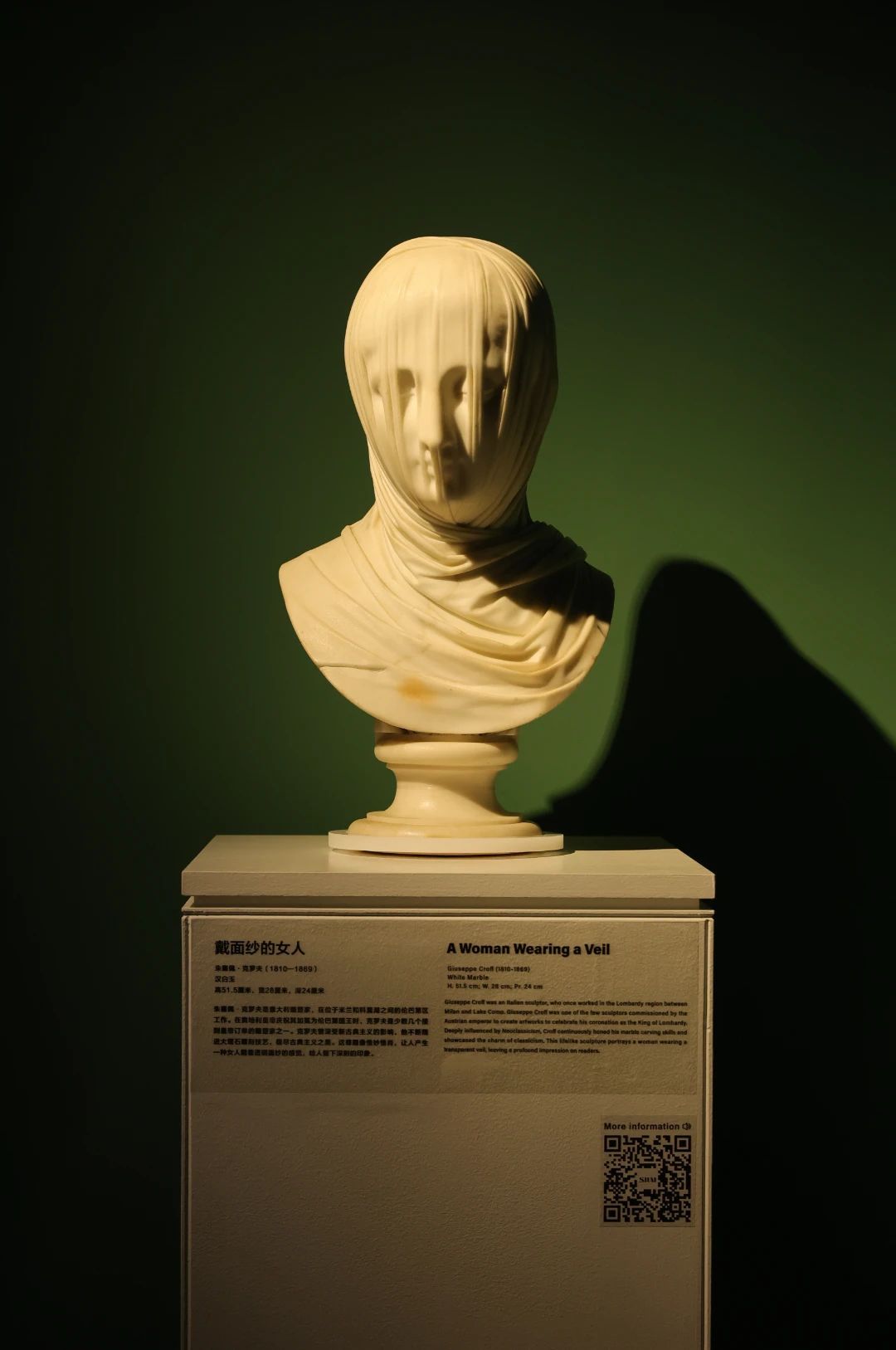
“沉睡三千年,一醒惊天下”的三星堆遗址,是中华文明璀璨星河中明亮而神奇的一颗。
罗丹是“现代雕塑之父”,他的作品中饱含对生命、自然的歌颂、热爱与忧思。
在上海大学博物馆举办的特展——“青铜之光:三星堆与罗丹的超时空对话”展出了许多三星堆、金沙遗址出土文物和罗丹及其同时代雕塑家的作品,让我们一起来详细了解展品背后的故事吧!
第二部分 以人传神
“人”是三星堆遗址出土青铜器与罗丹雕塑的重要表现形式。三星堆青铜器与中原地区青铜器最大的区别之一就在于直接铸造人像来进行供奉和祭祀,对“人”的特别关注同样成为罗丹创作理念中最具代表性的思想意蕴。
黄金面具

· 商代后期(公元前1300年—前1100年)
· 高约28厘米,宽约23厘米
· 2021年出土于四川广汉三星堆遗址五号祭祀坑,K5:3
· 四川省文物考古研究院藏
· Late Shang Dynasty (1300B.C. - 1100B.C.)
· H. c. 28cm; W. c. 23cm
· Unearthed from No.5 sacrificial pit at the Sanxingdui Site in Guanghan, Sichuan, in 2021,K5:3
Collection of Sichuan Provincial Cultural Relics and Archaeology Research Institute
出土时拧成一团,经清理、展开成现貌。金面具仅存约半,其左半部分的额、眉、眼及部分鼻、口和下颌部均已缺失,右半部分保存较好,仅额、眉及部分眼部受损。金面具的面部整体瘦长;巨眼呈半月状,上缘平直;眼下有一道半弧形的凸起褶皱,与眼部下缘弧度相近;尖鼻,呈立体三角形;口部呈长条状,中镂空;下颌向外突出,呈窄条带状,与口部平行;耳部较长,外廓转角圆钝,上部微外凸,耳内饰勾卷纹,耳垂有圆形穿孔。据目前研究推测,该金面具应是覆于曲面头像上使用。
金面具成型工艺复杂,作为三星堆遗址出土的典型器物,应与宗教祭祀活动有关,其造型独特、技艺精湛,是中国黄金制品的艺术瑰宝。
The gold mask was twisted when it was just unearthed. Later, it was cleaned and unfolded to the shape we see today. While the forehead, eyebrow, eye, and parts of the nose, mouth, and lower jaw on the left half is missing, the right half is better preserved, with damages only to the forehead, eyebrow, and part of the eye. The gold mask features an overall slender and elongated face. The large eyes are half-moon shaped with flat upper edges. There is a semi-arc raised fold below each eye, similar in curvature to the lower edge of the eye. The nose is pointed and in a three-dimensional triangular shape. The mouth is long and rectangular with a hollowed center. The lower jaw juts outward, forming a narrow strip parallel to the mouth.The ear is relatively long, with rounded and blunt corners, slightly protruding at the top, decorated with Goujuan Wen (勾卷纹, curl-shaped pattern) inside, and the earlobe has circular perforation. Research concludes that the gold mask was likely used to cover a curved surface of a head.
The gold mask demonstrates intricate craftsmanship.As a typical artifact unearthed from the Sanxingdui Site, it was used on religious and ceremonial occasions. Unique design and superb craftsmanship make it a precious art piece among ancient Chinese gold ware.
戴面纱的女人

· 朱塞佩·克罗夫(1810—1869)
· 汉白玉
· 约1853年完成
· 高51.5厘米,宽28厘米,深24厘米
· Giuseppe Croff (1810 - 1869)
· White Marble
· About 1853
· H.51.5cm; W.28cm; Pr.24cm
朱塞佩·克罗夫是意大利雕塑家,在位于米兰和科莫湖之间的伦巴第区工作。在奥地利皇帝庆祝其加冕为伦巴第国王时,克罗夫是少数几个接到皇帝订单的雕塑家之一。克罗夫曾深受新古典主义的影响,他不断精进大理石雕刻技艺,极尽古典主义之美。这尊雕像惟妙惟肖,让人产生一种女人戴着透明面纱的感觉,给人留下深刻的印象。
Giuseppe Croff was an Italian sculptor, who once worked in the Lombardy region between Milan and Lake Como. Giuseppe Croff was one of the few sculptors commissioned by the Austrian emperor to create artworks to celebrate his coronation as the King of Lombardy. Deeply influenced by Neoclassicism, Croff continuously honed his marble carving skills and showcased the charm of classicism. This lifelike sculpture portrays a woman wearing a transparent veil, leaving a profound impression on readers.
展览时间:
2023年12月13日至2024年2月1日
展览地点:
上海大学博物馆一层临展厅
(上海市宝山区南陈路333号)
开放时间:
周一至周日8:30-16:30(16:00停止入馆)
校内师生凭本人一卡通入馆,无需预约。
校外观众采取网上预约方式入馆,扫描下方二维码或关注“上海大学博物馆”微信公众号,点击“个人预约”。

/地址/
上海大学博物馆
(南陈路333号)


